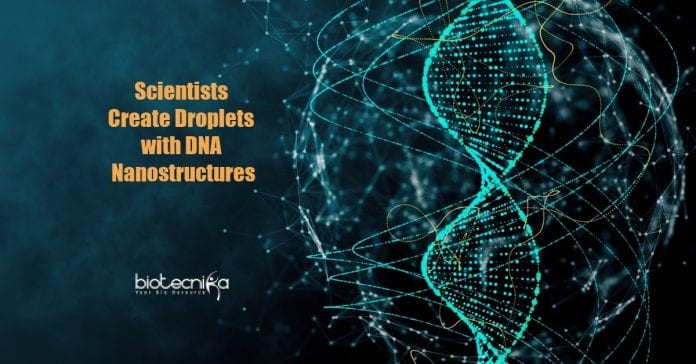Tokyo Tech Researchers Create Droplets With Designed DNA Nanostructures
DNA is the storage unit that carries genetic instructions in living organisms. Proteins are generated in the cells using this genetic information, which is essential to carry out biological functions as needed for the organism to survive. The double-stranded helical structure of DNA made of specific molecules called nucleotides is responsible for its functional properties. Scientists in their latest study designed DNA sequences to construct microstructures and nanostructures that could be used to study biomolecular functions or create artificial cell systems.
The interactions among DNA molecules can be programmed and controlled by customizing the designs of sequences in DNA nanotechnology. Various phenomena are caused by the intermolecular interactions in cells. One such phenomenon is the separation of a liquid into a denser phase of droplets within a more dilute phase called liquid-liquid phase separation (LLPS), which plays a crucial role in many biological processes. To deepen the understanding of the applicability of LLPs and provide a methodology for controlling bio-macromolecular droplets, LLPs artificially induced via DNA nanotechnology can be used.
Therefore, specific DNA-nanostructures were designed by the researchers at Tokyo Tech, led by Professor Masahiro Takinoue, to demonstrate controllability on LLPs
and understand the influence of DNA sequences in artificially designed DNA nanostructures.The construction of Y-shaped DNA nanostructures called “Y-motifs” was involved in the study published in the journal Science Advances. A short sticky end that interacts with other ‘compatible’ sticky ends is present on each side of a Y-motif. The researchers found that the Y-motifs reversibly agglomerate to form droplets and then gels upon progressively decreasing the temperature.
DNA droplets with various useful and highly designable behaviors can be obtained by changing the DNA sequence of the sticky ends in the Y-motifs. They could develop two sets of droplets for each type of Y-motif by adding another set of constructed Y-motifs with sticky ends that are incompatible with the previous set. This way, the researchers showed that DNA sequences could be tailored to fuse exclusively with similar ones.
A special DNA structure that can bridge together the incompatible Y-motifs was then created by Prof Takinuoe and the team. Droplets composed of both motifs were formed upon adding this to the mixture of Y-motifs. The fission of droplets and the separation of mixed droplets into Janus-shaped droplets with unmixable halves containing the two types of Y-motif was then caused by further construction of a cleavable variant of the special bridge DNA structure and subsequent addition of a certain cleaving enzyme. The scientists were able to localize the cargo molecules exclusively on one half of the droplet by conjugating cargo molecules with DNA strands compatible with either one type of Y-motif.
Editor’s Note; Droplets With Designed DNA Nanostructures, Tokyo Tech Researchers



























